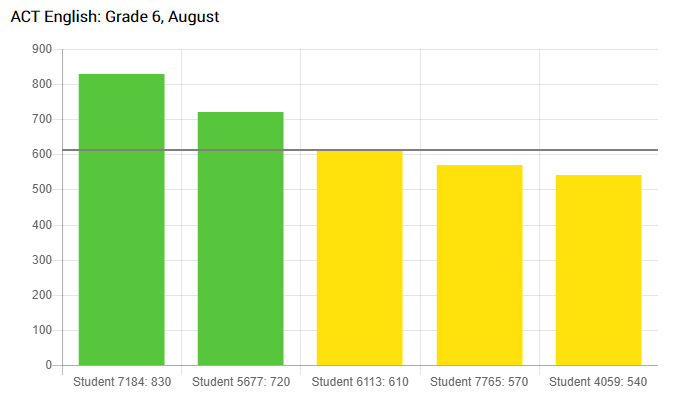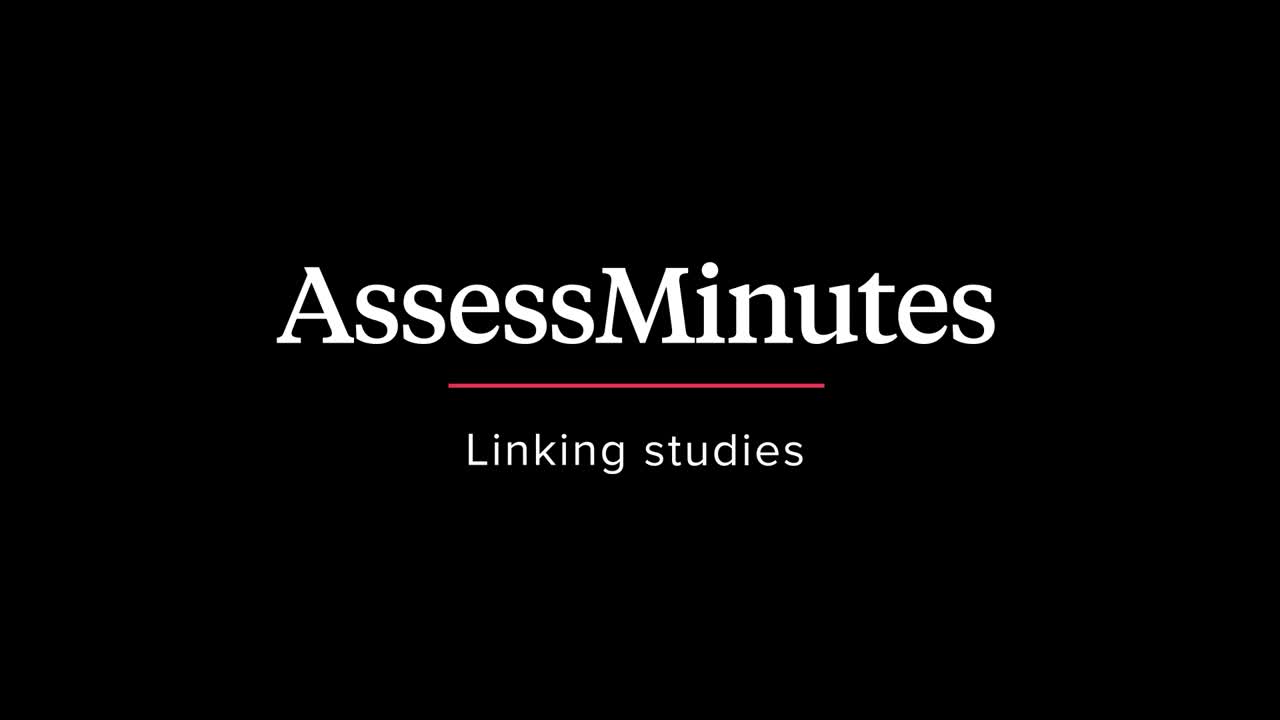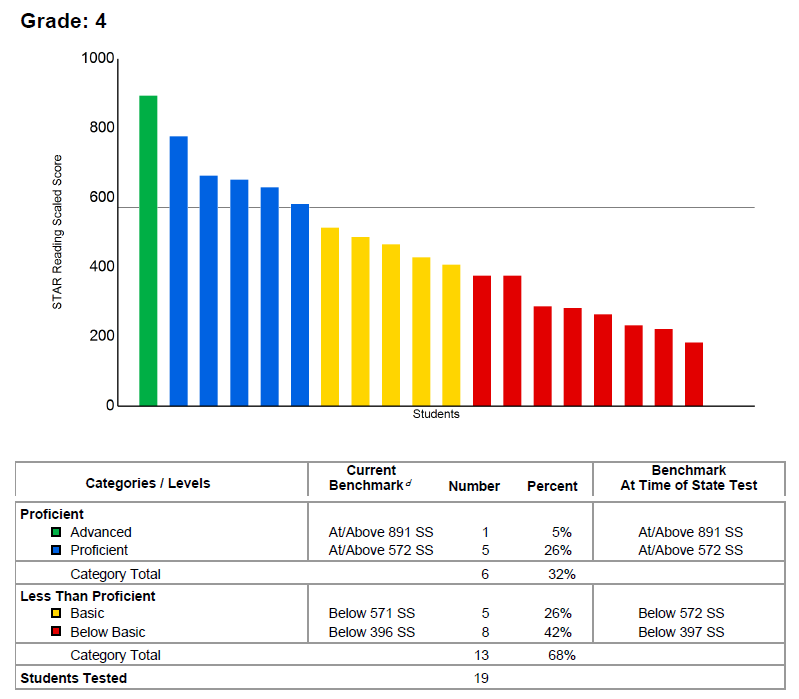October 11, 2018
You may have heard that Star Assessments can accurately predict student performance on your state’s summative or high-stakes test, as well as measure student progress toward ACT and SAT college and career readiness benchmarks.
But what does it mean to “predict performance”—and why does it matter?
When we talk about predicting performance, we’re talking about giving educators the power to see in advance which students are more likely to achieve proficiency on their state’s summative or high-stakes test—as well as which students are more likely to fall short of that proficiency benchmark.
Why predict student performance?
When educators have accurate predictions of student performance, they don’t just get to see the future. They get the power to change that future.
Predicting student performance isn’t like forecasting the weather. At best, a weather forecast can help an individual avoid being caught in a heavy downpour without an umbrella, but it doesn’t give a person the power to stop it from raining in the first place.
However, when it comes to student performance, things are different: An educator can significantly influence how a student performs on a test. By using a student’s predicted performance, along with all the other information known about the student, to make informed decisions—for example, adjusting core instruction, targeting support, or starting an intervention—an educator can help that student master new skills, close gaps, and improve their test scores.

Predictions can’t change the weather, but they can help educators change a student’s future.
The further in advance an educator knows how a student is projected to perform on a test, the greater the opportunity they have to help that student improve their skills and their test score. This is why Star Assessments are built to predict performance far in advance: As early as fall, Star reports provide educators with predictions of student performance on their state test.
Powerful insight for teachers
Imagine what a teacher could do if she knew at the beginning of the school year that a student who seemed to be doing well was actually projected to fall just short of proficiency on the end-of-year state test. Could this be the early warning sign she needs to adjust instruction right away, instead of weeks or months later when there are more overt signs that the student is falling behind? Could an early intervention be what gets that student on track for success?
How many more students could achieve proficiency if their teachers had access to an accurate prediction of test performance months in advance?
Compare this to summative test results, which are frequently reported back to teachers weeks or even months after students take the test. Sometimes results don’t arrive until the summer, after the school year has ended. In a few cases they’re not available until fall, after the next school year has already started. At that point, there is little a teacher can do other than conduct a postmortem analysis.
Strategic foresight for administrators
This foresight is critical for administrators, too. For many schools and districts, lower-than-expected test scores affect more than just their reputation—they can negatively impact a school’s rating, state ranking, reporting requirements, or even funding.
When administrators can accurately predict student performance on state summative or high-stakes tests, they can do more than avoid being blindsided by poorer-than-expected results: They can help prevent them by re-allocating resources, implementing school- or system-wide initiatives, or taking other strategic actions.
Progress toward ACT and SAT benchmarks
It’s critical to know as soon as possible which students are on track to graduate ready for the challenges of college or career and which ones may need additional help. The earlier in the school year—and, perhaps more importantly, the earlier in a student’s academic career—that educators get this information, the more opportunities they have to provide extra support, personalize instruction, and ultimately accelerate learning.
When it comes to the ACT and SAT college entrance exams, Star Assessments provide educators with critical insight even before students reach high school. As early as sixth grade, educators can use Star scores to determine if students are on track to reach college and career readiness benchmarks on both the ACT and the SAT college entrance exams.
Star empowers educators to track student progress toward the ACT benchmarks for English, Reading, and Math, as well as the SAT benchmarks for Evidence-Based Reading and Math.

Star assesses students’ progress toward ACT and SAT benchmarks as early as sixth grade.
The science behind predicting performance: Linking studies
How is it possible for one assessment to predict a student’s future performance on a different assessment?
The key is a linking study. With a linking study, you can use one test (such as a short interim assessment) to predict performance on another test (such as a high-stakes test).
The linking process starts with finding students who took both tests—for example, both Star and the SAT. Since every test has its own score scale, scores cannot be directly compared. In this case, Star scaled scores generally run from 0 to 1400. The SAT ranges from 400 to 1600. Although these ranges overlap, a 1200 on a Star assessment is not the same as a 1200 on the SAT.
Researchers take students’ scores on both tests and then use a statistical procedure to align the data and equate the scales. The result is a concordance table, which corresponds each Star score with one, or a specific range, of the other test’s scores. This allows us to estimate concurrent performance: How a student would score on each test if they took both tests within a single 30-day period.
To learn more about linking studies, watch this quick AssessMinute video.

Here at Renaissance, we do a lot of checking to make sure that there’s a strong correlation between two tests before releasing a linking study or updating reporting in Star Assessments. Our linking methodologies and reporting were developed with input from assessment experts, school administrators, school psychologists, and classroom teachers.
We also work hard to keep our linking studies up to date, especially as state assessments change. Usually results from a new test need to be released before it’s possible to collect the data needed for a linking analysis, so a linking study may not be available if your state has a new test.
After a new linking study has been completed, we publish technical reports for each linked test because we want to be fully transparent about our methodology, correlations, and accuracy results (you can find your state’s linking study on the Star Assessments—Evidence page). The reports include a table of cut scores showing the Star scores that are equivalent to state proficiency cut scores. Please note that these tables are for concurrent scores and should not be used to estimate how a student will perform on a state test that’s still months away.
The science behind predicting performance: Growth norms
To predict future performance, growth norms need to be added to the analysis. For example, our linking study shows that a student needs a concurrent score of 980 on Star Reading to meet the ACT benchmark for reading. But what Star score do they need to have in September to be on track to meet the ACT benchmarks in March?
Thankfully Renaissance has an enormous database—with more than 2.8 billion real-world data points—which has given us great insight into how students learn and grow. Our growth norms, which are updated annually, are based on the fall-to-spring growth of millions of students in a nationally representative sample.
Using these growth norms, we can see that eleventh graders who score 980 on Star Reading in March typically score 959 or higher on Star Reading in September. Thus, if the student scores 959 or higher on Star Reading in September, we would determine they were on track to meet the ACT benchmark in March.
The process is similar for predicting performance on a state test. Using Star data, state test data (including performance categories), growth norms, and the start date for state testing, we can define what “on track” looks like for each performance category on each day of the school year, by subject level and by grade. Based on a student’s most recent Star scores, our software automatically predicts which performance category he will be in when he takes the state test.
The power to change the future
Much like weather forecasts, the further out an event is, the harder it is to accurately predict the outcome. While a meteorologist can confidently forecast tomorrow’s weather, determining what the weather will be in six months is much harder. The situation is similar with student performance: The further out a test is, the harder it is to accurately predict performance.
Star Assessments have shown high degrees of accuracy as a predictor of performance on tests taken in the same school year, such as state summative or high-stakes tests. For example, one large metropolitan district in Florida found that Star “accurately predicted the achievement levels of more than 75,000 students” on their state test in its very first year of use. In another example, a mid-sized suburban/rural district in Pennsylvania discovered Star predicted results on their state tests “within 3–5 percent at every level and subject.”
For tests more than a year out (such as the ACT or SAT college entrance exams for students in middle school or the early grades of high school), Renaissance can help educators determine if students are on track to reach benchmarks.
In both cases, it’s imperative to remember that these are scientific estimates, not guarantees. Our estimates are data-driven and very accurate at an aggregate level; at an individual level, it’s possible for a student to grow faster or slower than expected.
More importantly, changes to instruction—such as starting or ending an intervention—can speed up or slow down a student’s growth. This is actually good news. As mentioned earlier, this gives educators the power to change a student’s future.
Interpreting predictions of performance
There are two key Star reports that educators should review when predicting student performance on state summative or high-stakes tests. (For checking progress toward ACT and SAT benchmarks, use our ACT and SAT tool.)
One is the Star Screening report, which shows the distribution of students in a class according to state, district, or school benchmarks. When the benchmark is set to your state assessment, the report will show how many students are predicted to fall in each performance category according to growth norms.

The other is the Star State Performance report. After a student has taken three or more Star assessments, this report will show a trend line that estimates how an individual student may perform in the future. The report shows another line, the Pathway to Proficiency, which indicates a typical rate of growth for a student that would just meet the state’s definition of proficiency at the time of the state exam in the spring. Using this report, an educator can see whether a student’s trend line is likely to fall above or below the Pathway.
For more information about interpreting predictions of future student performance, watch this quick AssessMinute video.

Acting on predictions of performance
Once you’ve used Star Assessments to predict student performance on your state’s summative or high-stakes test, you may find yourself asking: What next?
With Star, you have lots of options. You can:
- Review the Star Mastery Dashboards to get deeper insights into what skills an individual student has mastered and which skills need further attention. The Mastery Dashboards display a student’s level of mastery of your state’s grade-level expectations at the domain, standard, skill, and subskill levels.
- Group students for differentiated instruction using the the Star Record Book—Manage Groups feature.\
- Follow the step-by-step instructions provided via the Star Goal-Setting Interactive Tool to set ambitious but attainable goals for groups or individual students.\
- Use the Star Record Book—Plan Instruction feature to plan instruction for the whole class or specific student groups. This feature uses learning progressions aligned to your state’s standards to help pinpoint the skills students are ready to learn. From here, you can also find a wide variety of instructional resources tied to those skills.
- Run the Star Instructional Planning reports for a closer view of how a group or individual is currently performing compared to state, district, or school benchmarks, as well as how they’re projected to perform. These reports also offer suggested skills to help you keep students moving forward on the path from naïve understanding to mastery.
- If you decide to start or continue a student’s intervention, use the Star Progress Monitoring report to determine if students are responding to the intervention.
- Keep parents involved in their children’s academic growth using the Star Assessment Parent report, available in both English and Spanish.
Need additional assistance with interpreting or acting on your Star data? Remember that Renaissance’s professional learning team is always ready to help you implement with fidelity and achieve your goals! Whether you need product training, implementation support, data coaching, leadership seminars, or a custom professional development option, we can build a plan that meets your unique needs, specific goals, and scheduling requirements. Explore our many professional learning services.
Learn more
Have you seen the latest features and functionality in Star? Explore curriculum-based measures for reading and math, enhanced support for emergent bilingual learners, and much more.

